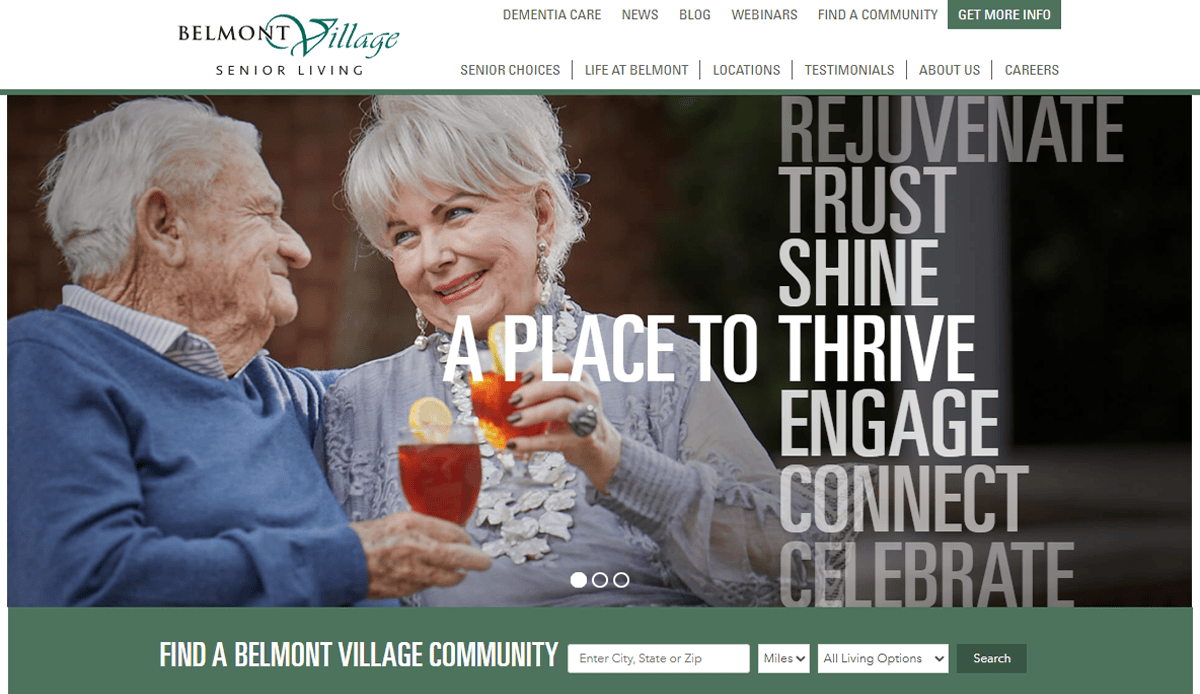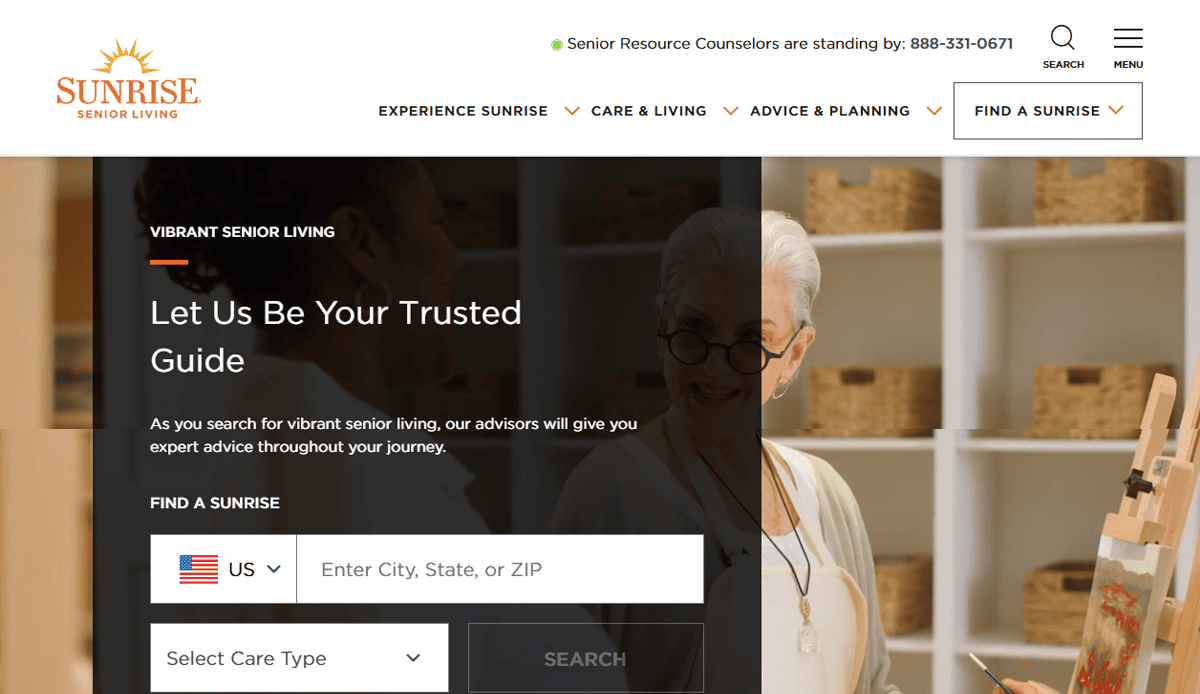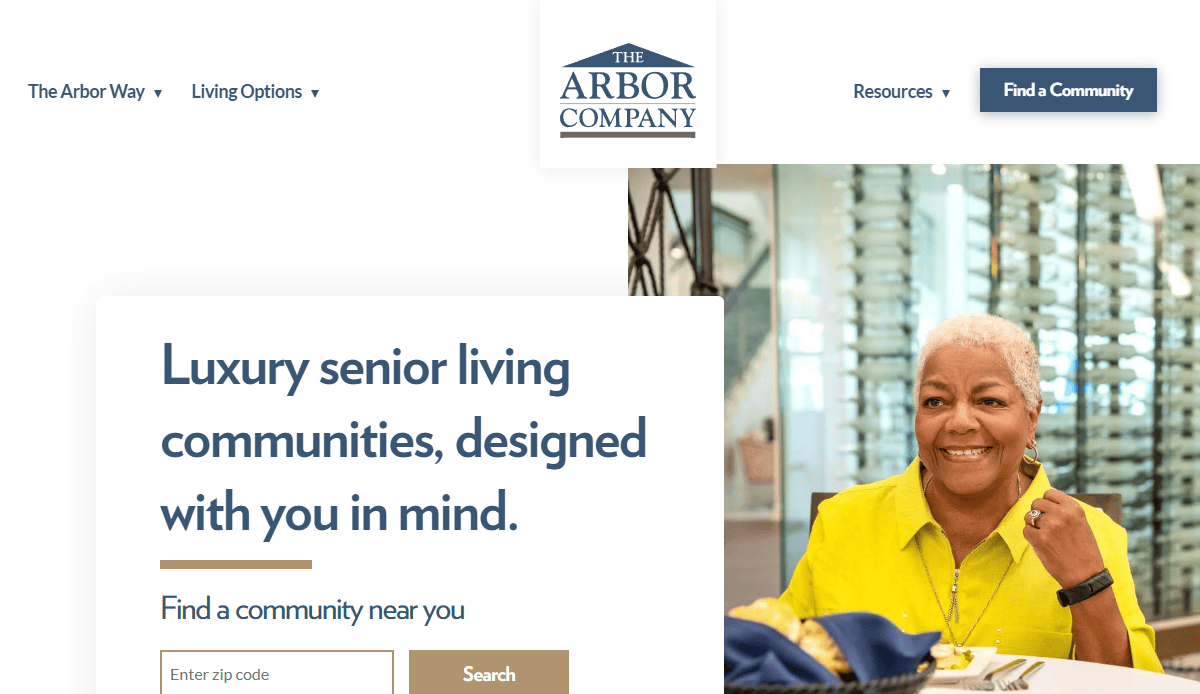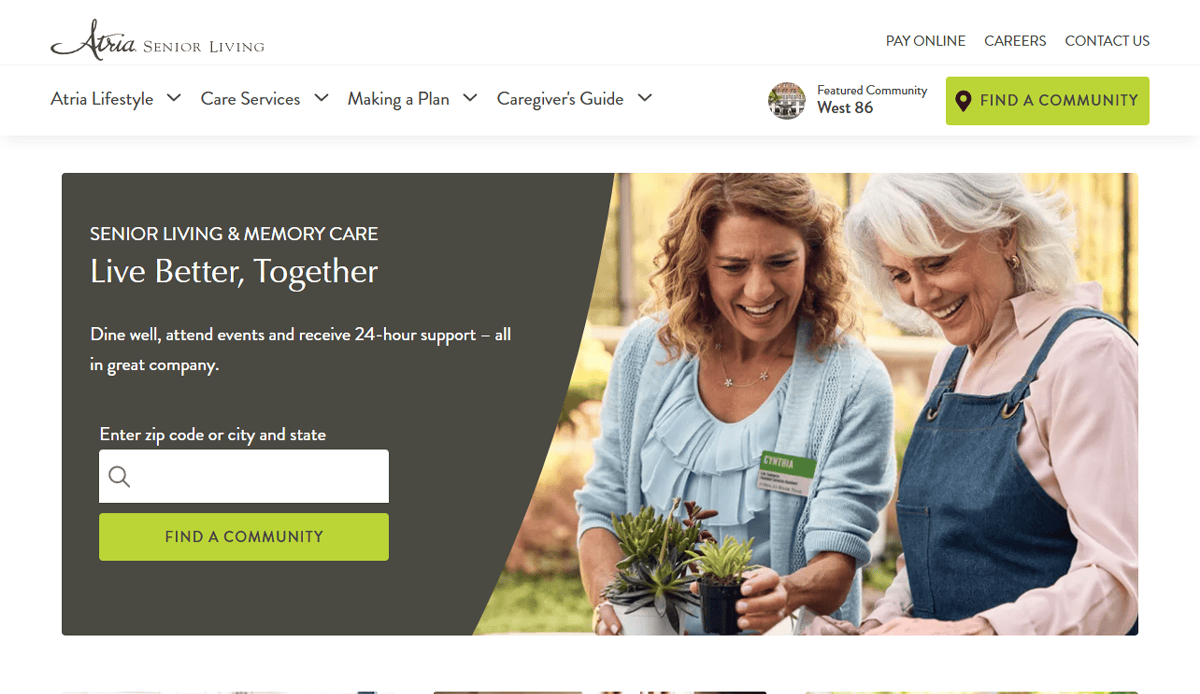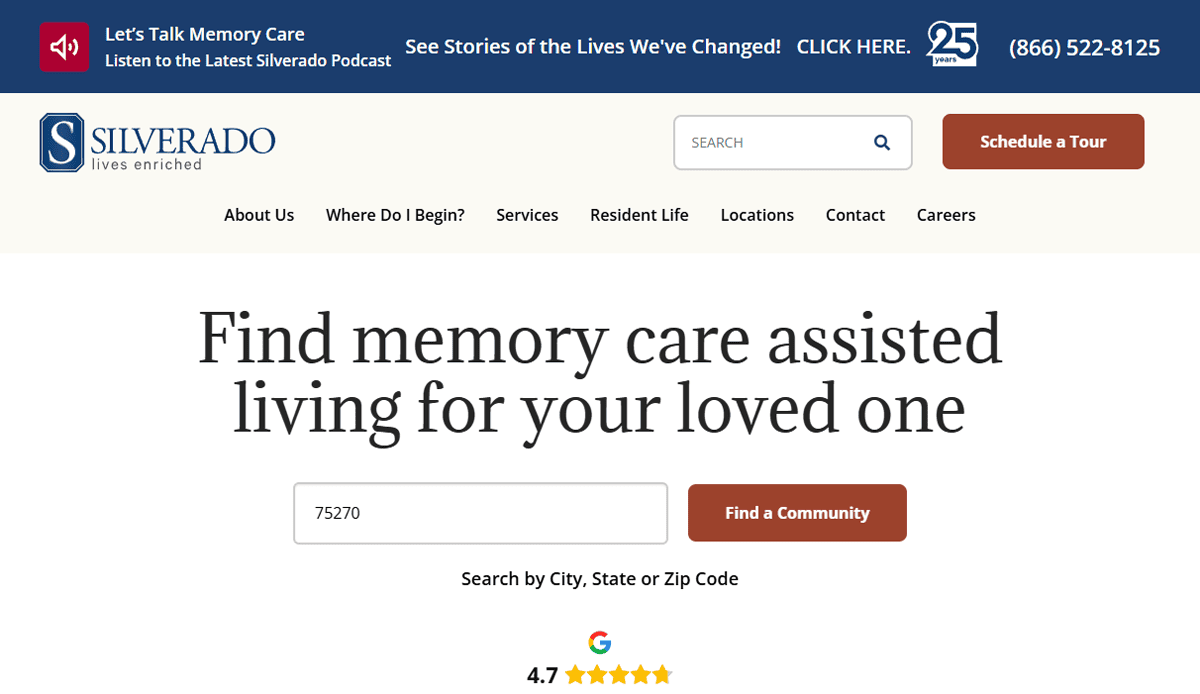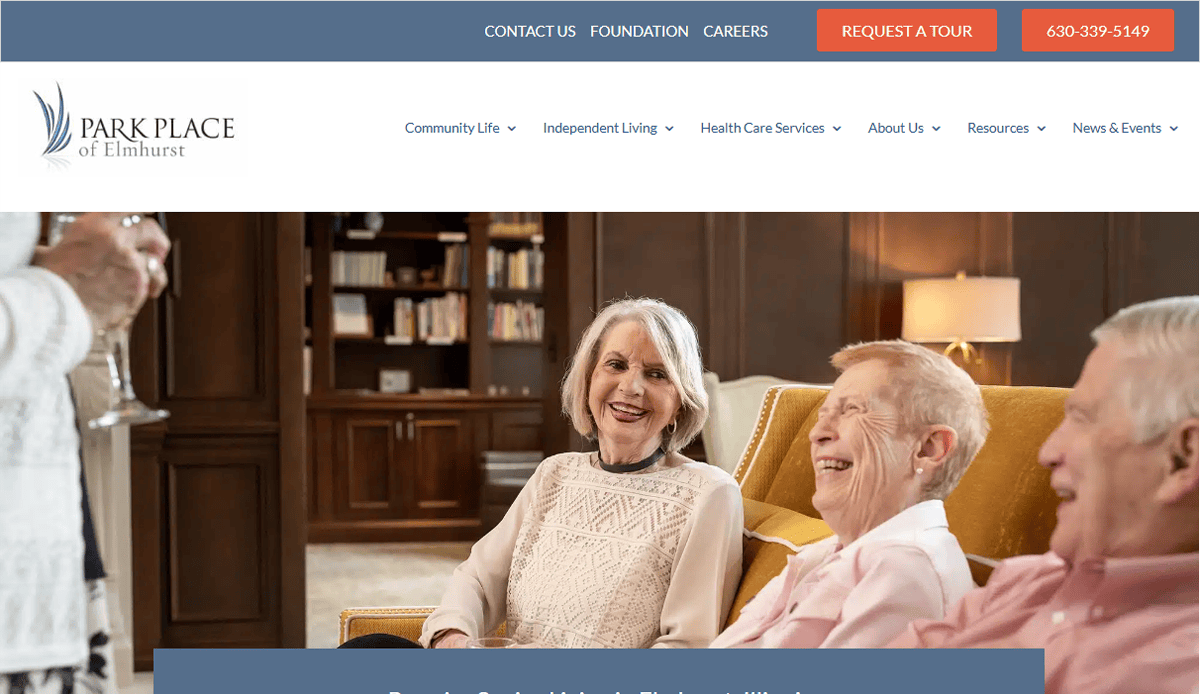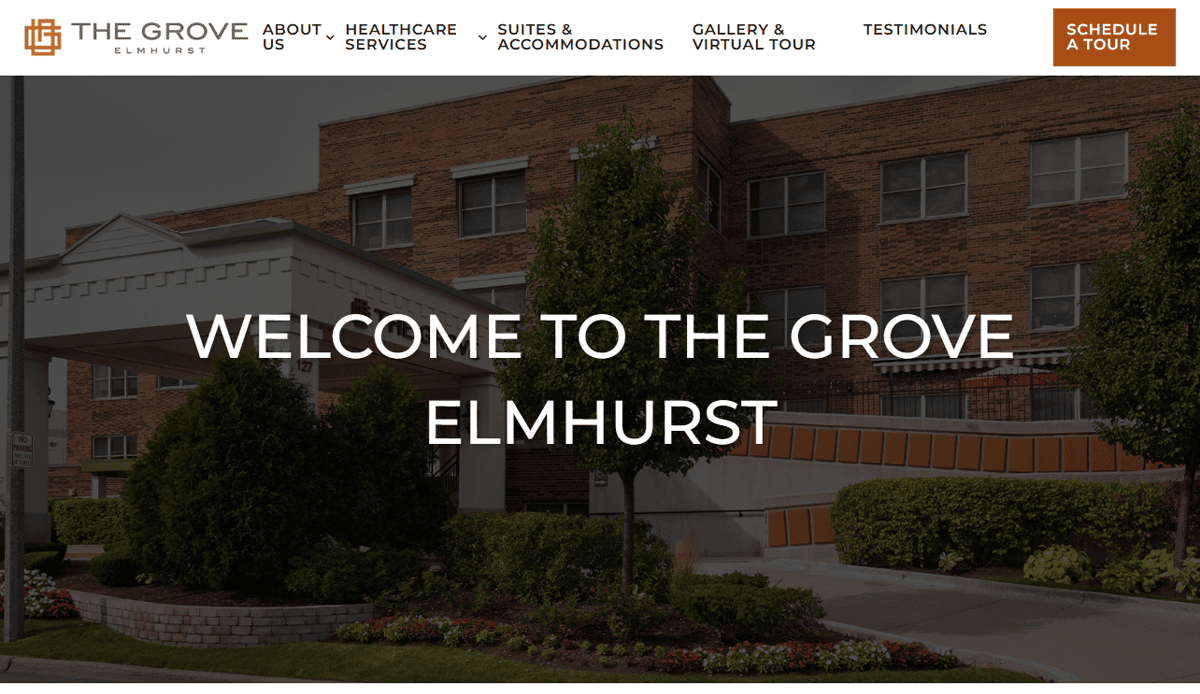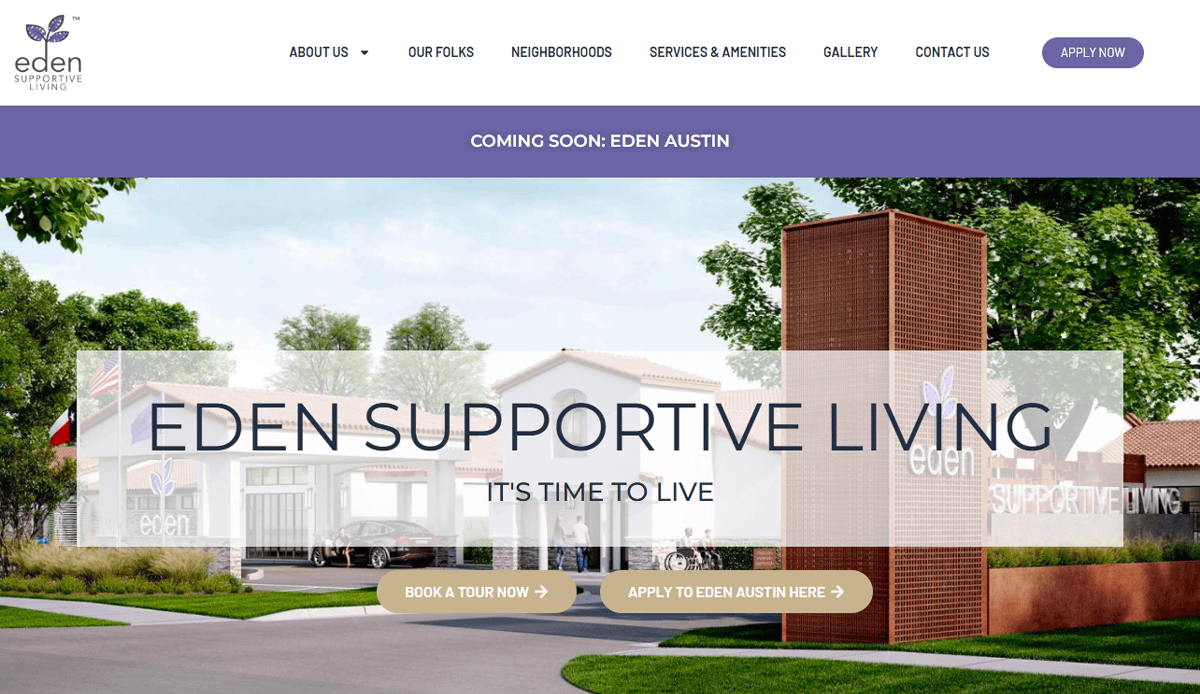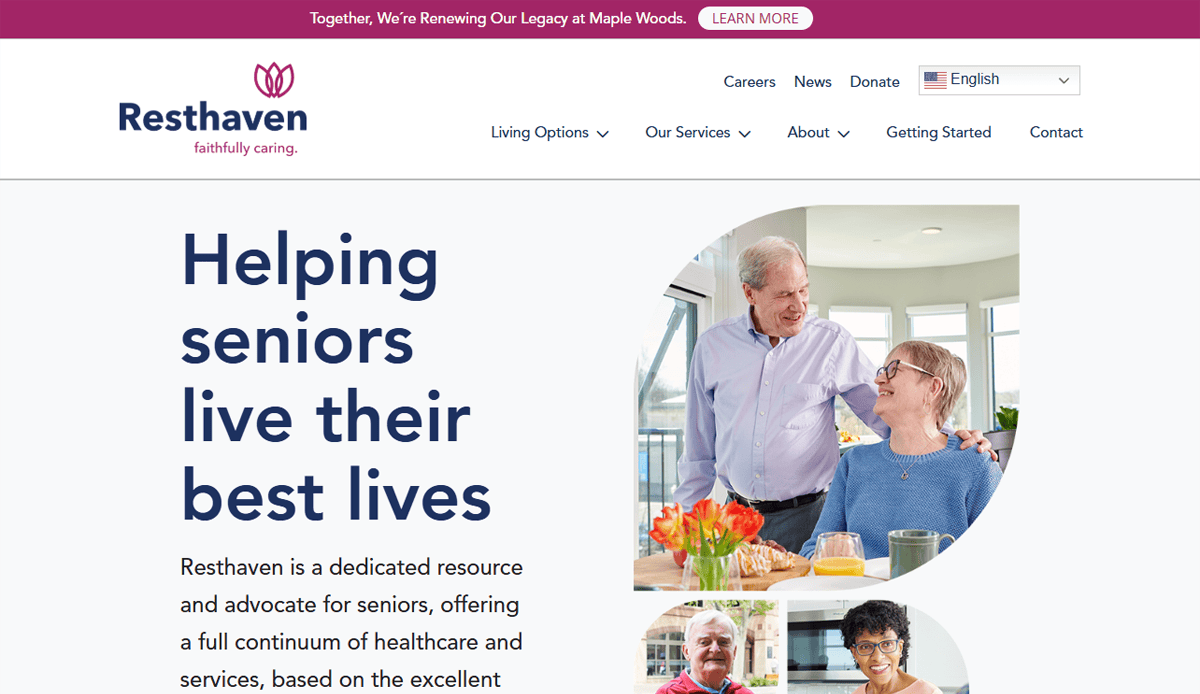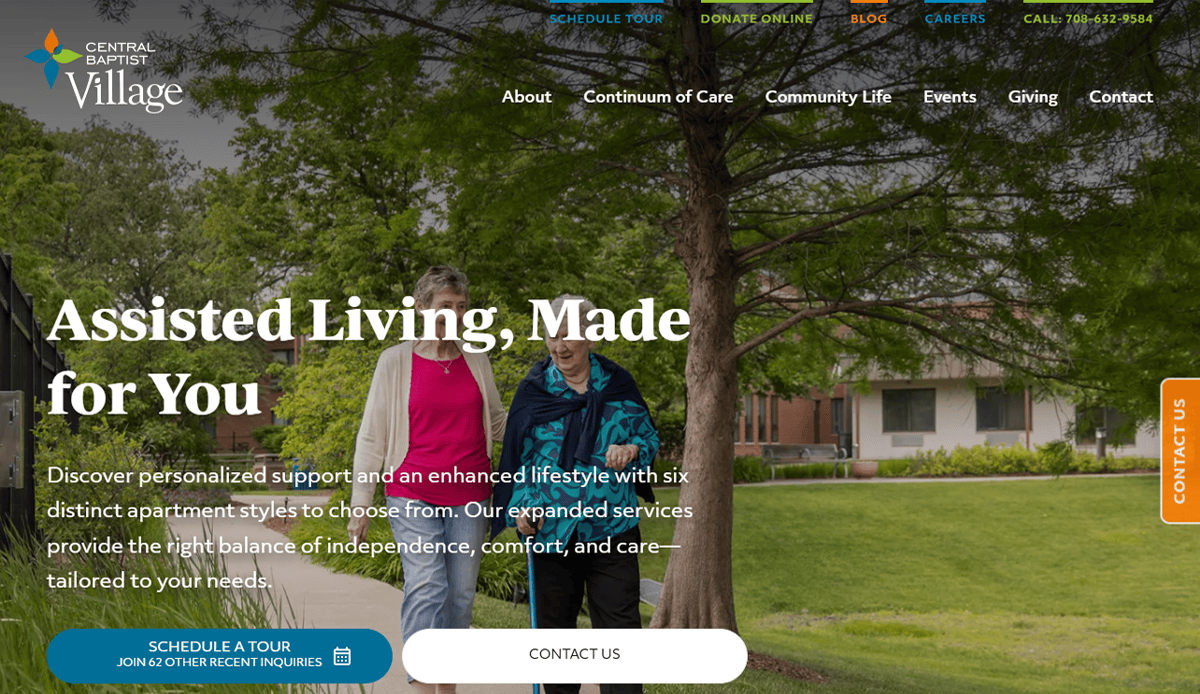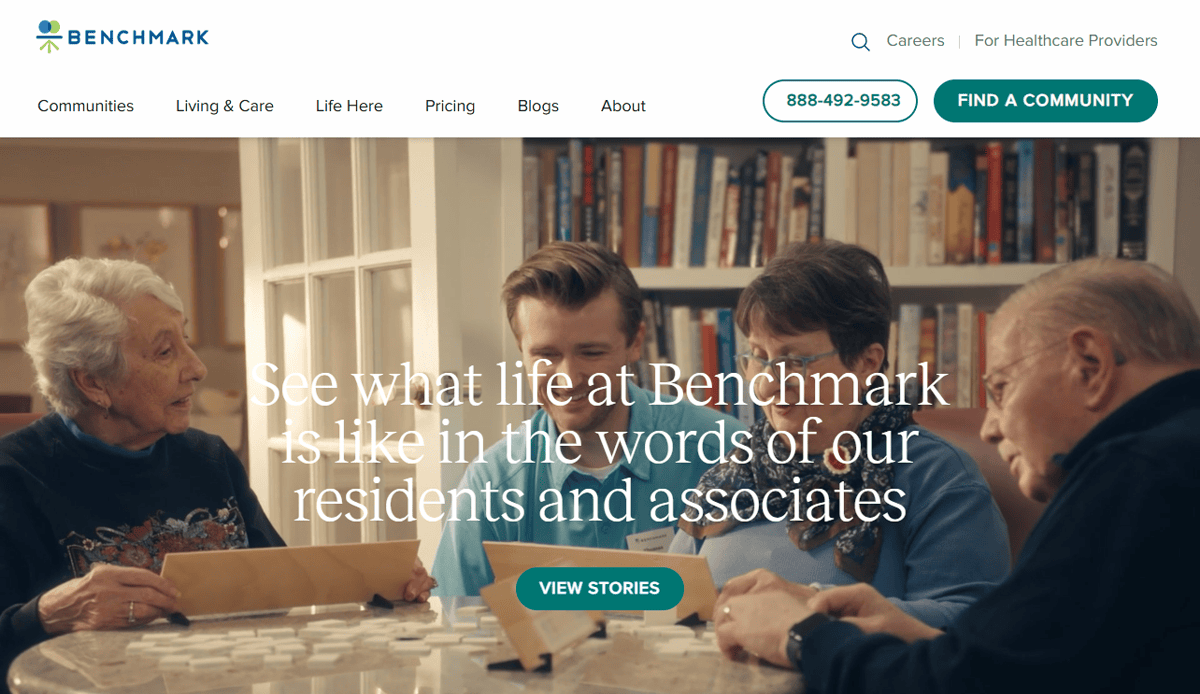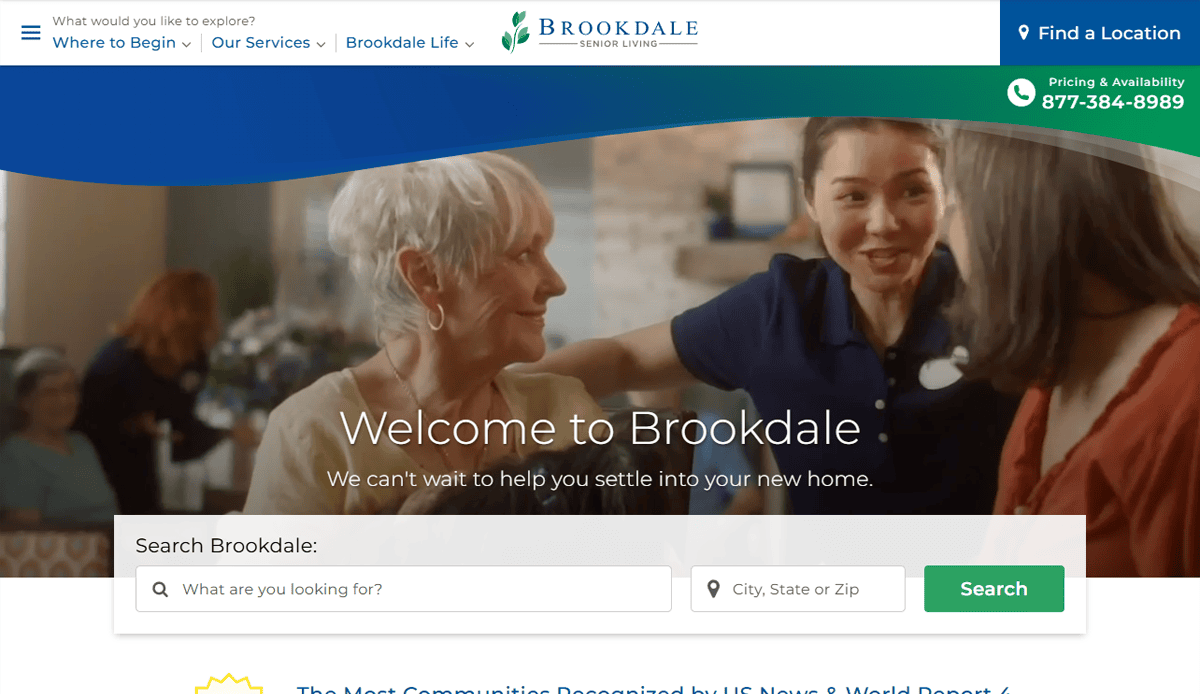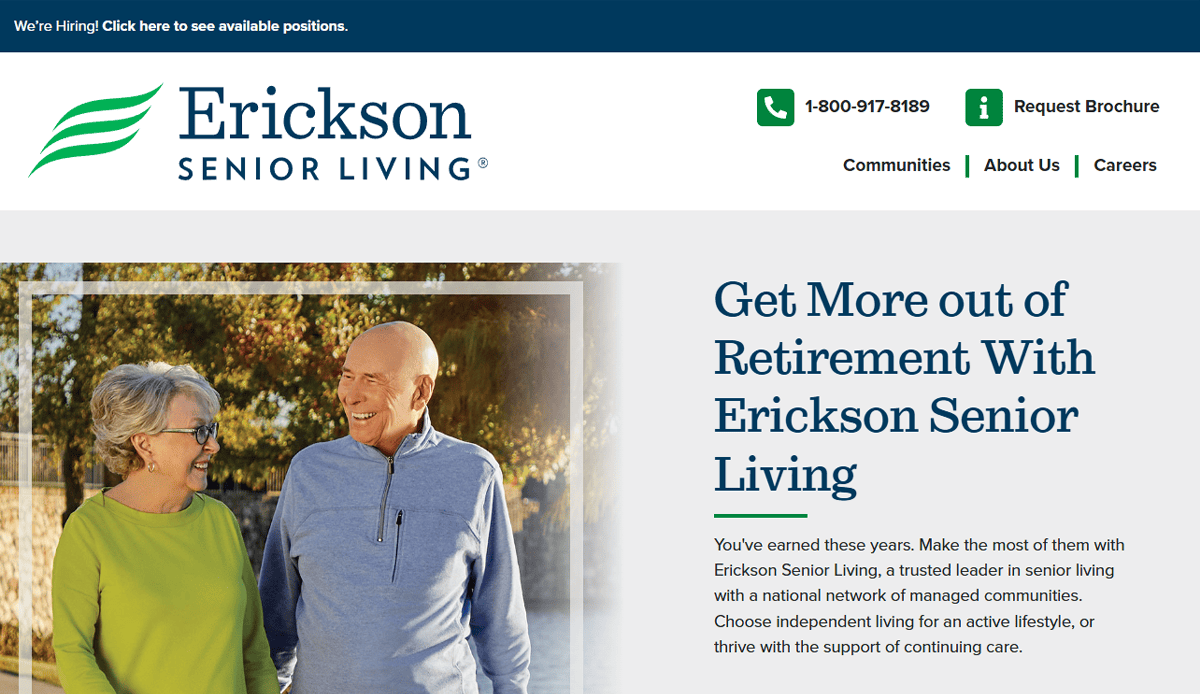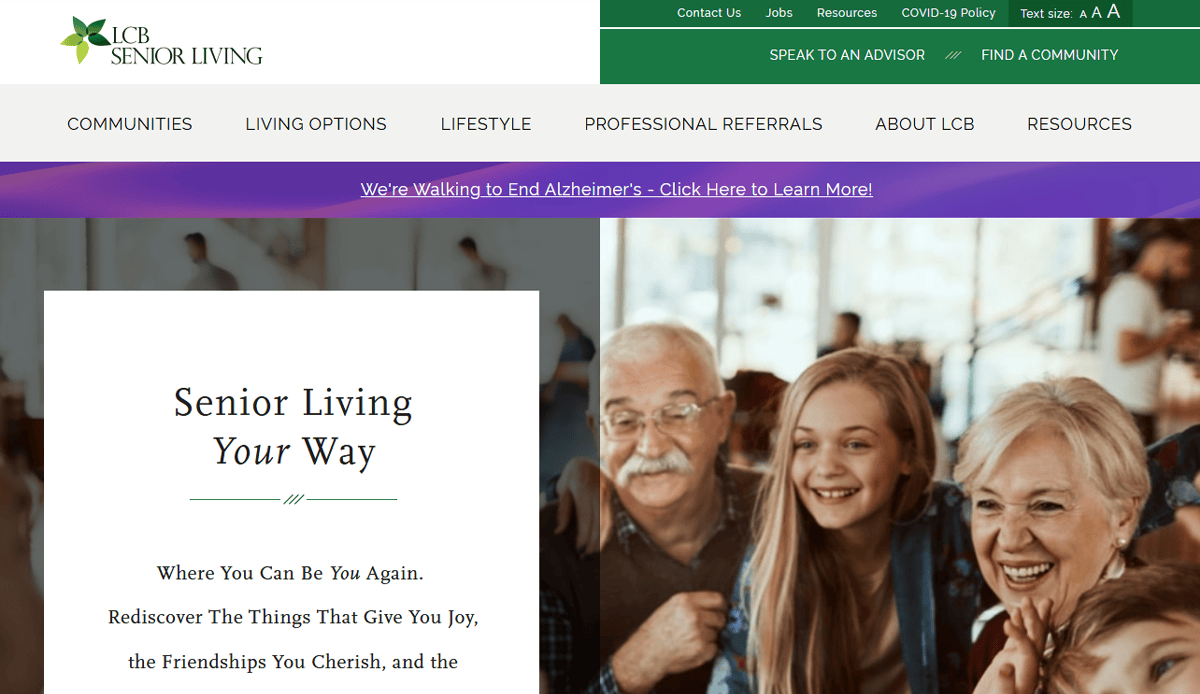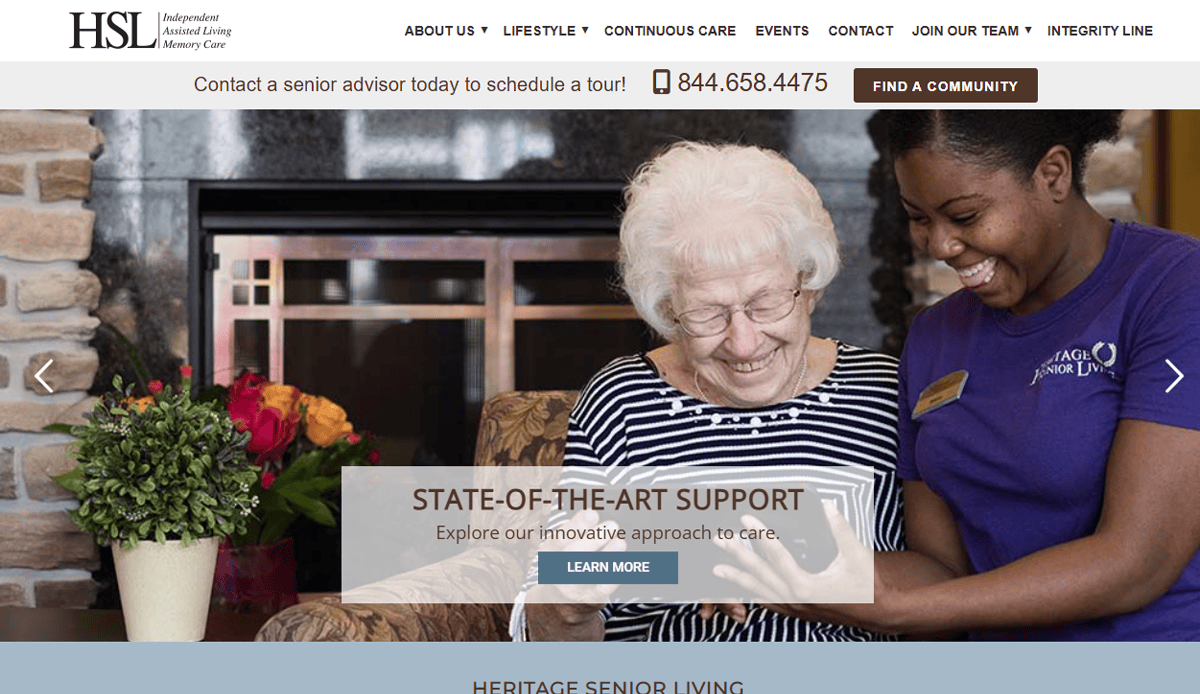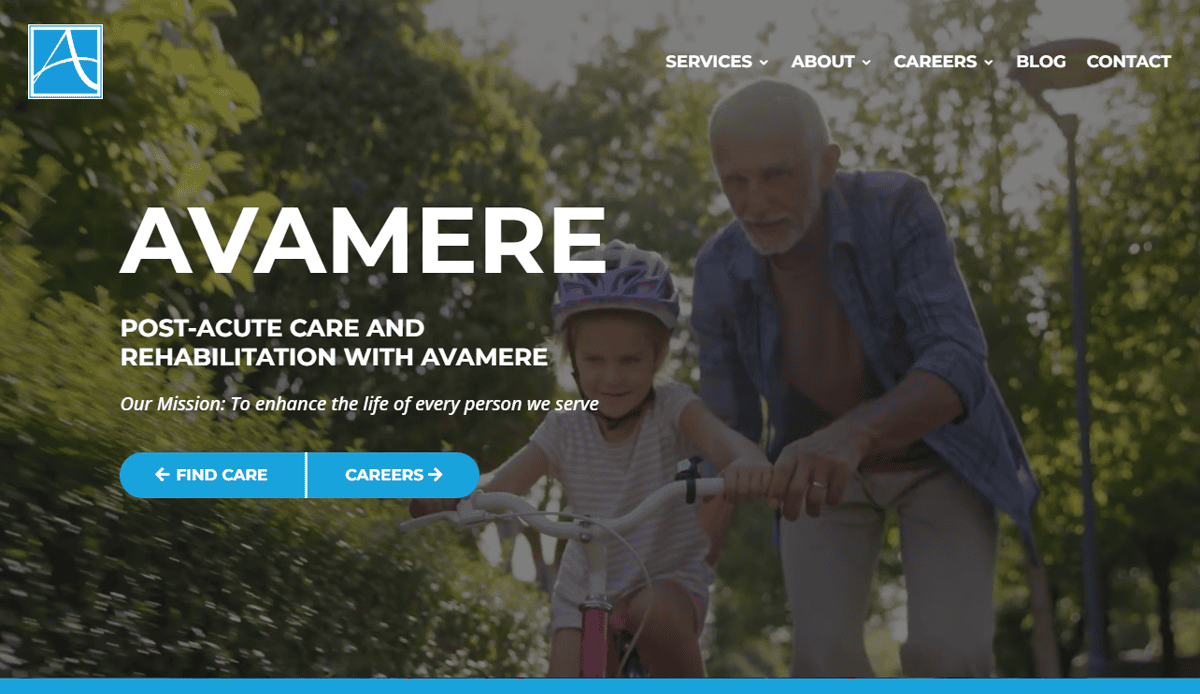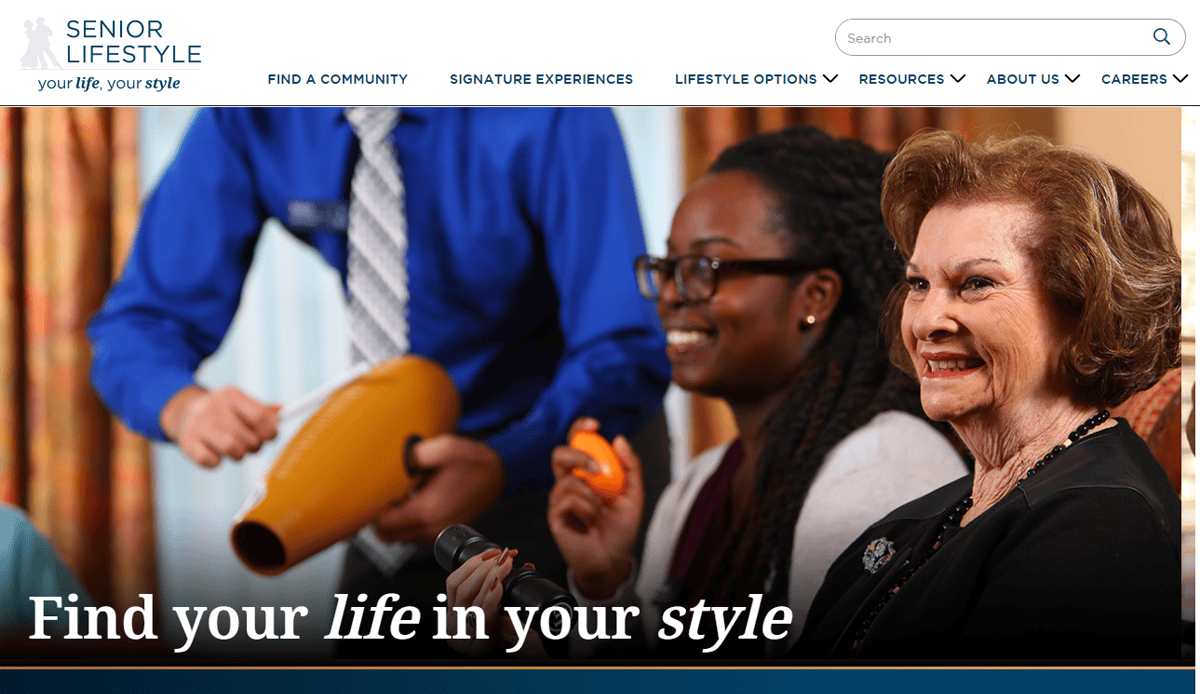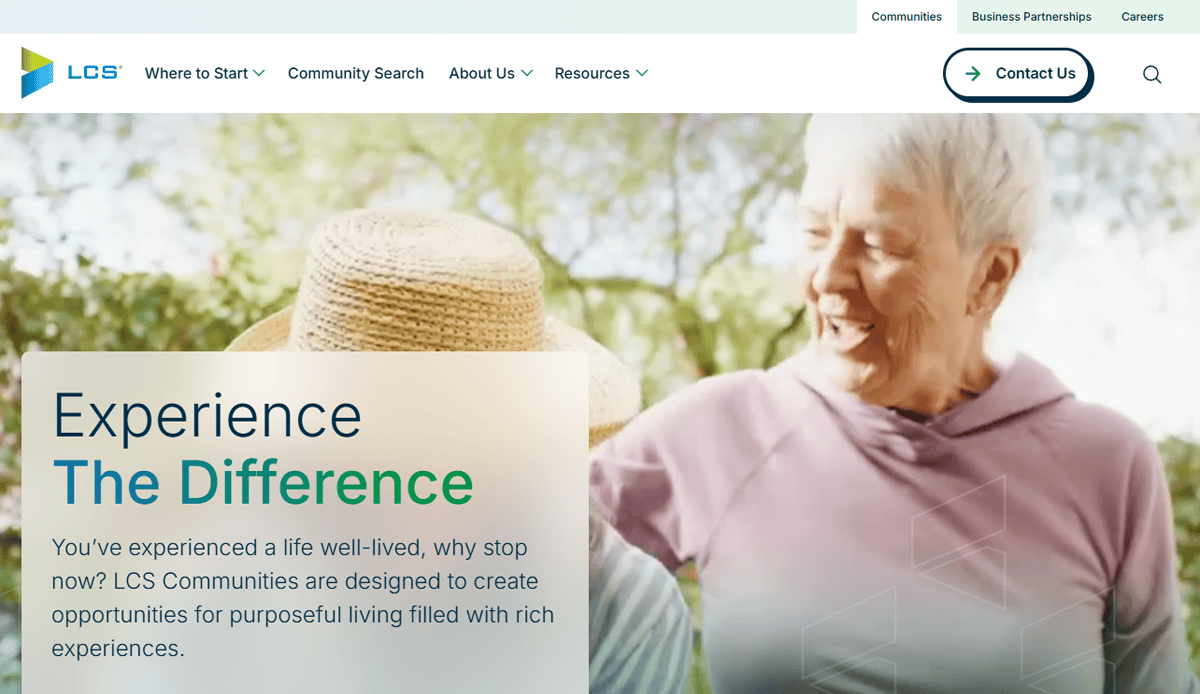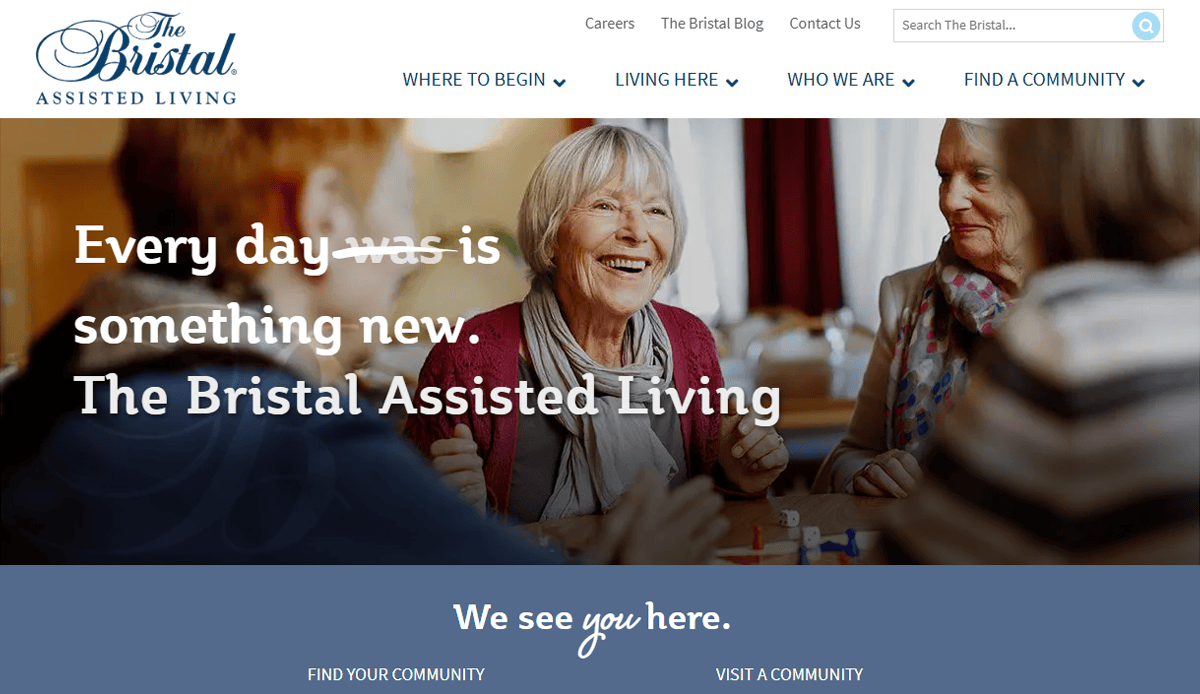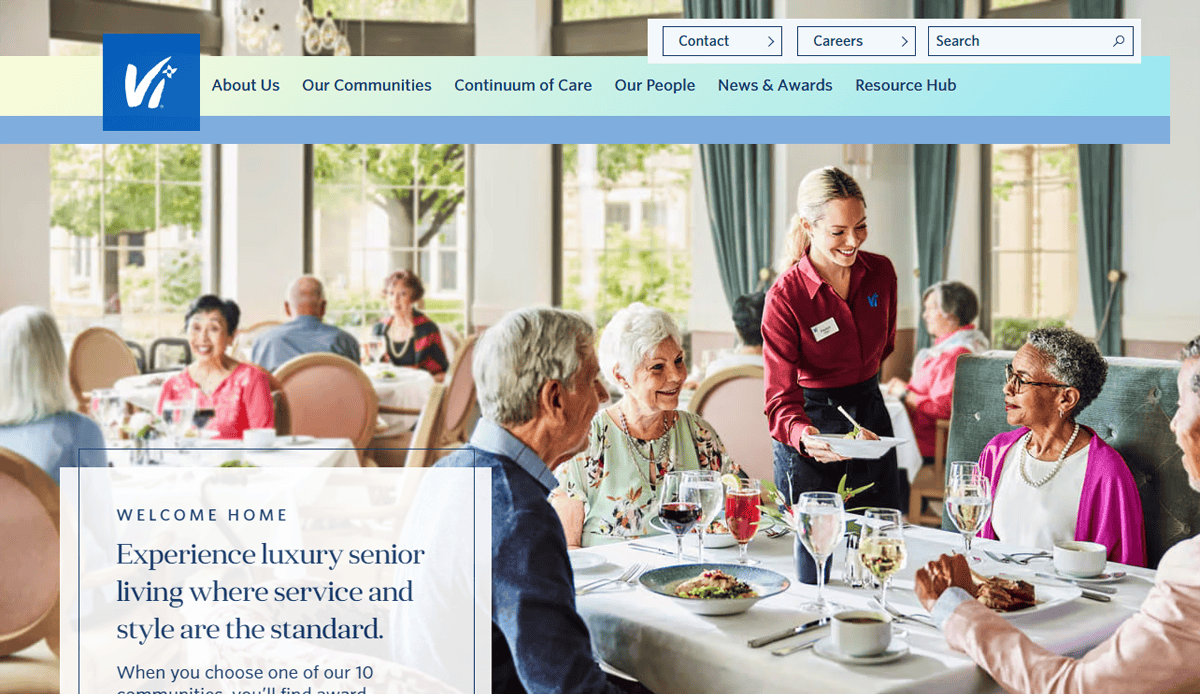Just looking for our Best Assisted Living Website examples list?
The Power of First Impressions: Why Senior Living Website Design Matters
When it comes to assisted living and senior care, your website is often the very 1st impression potential residents and their families will have of your community. In a world where nearly every decision starts with a Google search, having a well-designed, responsive design is no longer optional—it’s essential. Your senior living website must do more than just look visually appealing; it has to clearly communicate your value, guide users effortlessly through your offerings, and inspire confidence to take the next step.
From navigation to virtual tour functionality, a great design can determine whether a family schedules a tour or leaves your site for a competitor. With senior living options expanding, competition growing, and attention spans shrinking, design, speed, and strategic calls to action have become mission-critical.
This guide explores the best practices that turn static websites into powerful living marketing tools. We’ll dive into how to highlight provisions, floor plans, and emotional storytelling to establish trust and convert visitors into potential clients. Plus, we’ll break down how SEO and search engine placement influence your visibility in search results and how to optimize for both performance and user experience on any mobile device.
Whether you’re launching a new site or revamping an existing one, this guide is your blueprint for creating a senior living website that works 24/7 to grow your community.
Website Planning & Purpose: Building the Foundation for Success
Before diving into layout, colors, or code, a website must begin with a strategic planning phase. This is where assisted living communities define who they are, who they serve, and what outcomes they want to achieve. Unlike standard web design projects, senior living websites must account for dual audiences—prospective residents and their adult children, each with distinct emotional and informational needs.
The planning process should begin by identifying core goals: Are you trying to increase tour requests? Generate more leads from Google My Business? Build trust with family decision-makers? Clarifying your site’s purpose will shape every other decision.
Next, structure is everything. Mapping out a clean, intuitive user pathway strategy ensures that users can easily find key information such as floor plans, what’s included, care levels (like memory care), and contact options. Each page should guide visitors logically and help them take the next step, whether that’s scheduling a visit or calling for more information. For a deep dive into structuring your site the right way, check out our website organization guide.
This phase also includes defining brand tone, prioritizing accessibility standards, and preparing content that speaks to the emotional journey of choosing a senior living option. By starting with a solid plan, communities can create a purposeful, high-performing website that engages visitors and drives real-world results.
Design Principles: Turning Strategy Into a Seamless User Experience
With a solid foundation in place, the next step is applying key design principles tailored to senior living communities. These principles bridge strategy and execution, ensuring the website looks professional while providing a seamless and supportive experience for every visitor.
Clarity is paramount. Text should be easy to read with high contrast, generous white space, and legible font sizes. Navigation must be intuitive, allowing users to access essential information like care services, amenities, and contact forms within two clicks. Seniors and their family members are often under stress when browsing these sites, so removing friction through clear pathways is essential.
Visual hierarchy plays a major role in guiding the eye to priority actions. Headlines, CTAs, and imagery should be deliberately placed to draw attention and encourage engagement. The use of emotionally resonant images—such as smiling residents or caring staff—helps cement trust and make the website feel welcoming.
Responsive design is no longer optional. With many users accessing sites from cell phones or tablets, layouts must adapt seamlessly to all screen sizes. This ensures your content remains easy to navigate and engage with regardless of how it’s viewed.
Accessibility is also a core design priority. Incorporating ADA-compliant design elements such as keyboard navigation, descriptive alt text for images, and properly labeled buttons supports users with visual or motor limitations. For a comprehensive breakdown on how to create content that is accessible and inclusive, see our accessible content guide.
Finally, consistency cements trust. Use a cohesive color palette, recurring design motifs, and a consistent tone of voice to reinforce your brand identity across every page. A well-designed website doesn’t just look good—it instills confidence, improves user experience, and supports your community’s growth goals.
Content & Navigation: Structuring Information for Clarity and Conversion
An effective website delivers clear, relevant information in a way that is easy to find and understand. This means structuring content and navigation with both emotional needs and usability in mind. Potential residents and their families are often navigating a difficult decision-making process, so your website should remove uncertainty and answer their questions before they even have to ask.
Start by building a clean, hierarchical site structure. The main menu should highlight the most critical areas: Living Options, Amenities, Room Design Plans, About Us, and Contact. Each of these core pages should be accessible within one to two clicks from the homepage. Dropdown menus help organize content by care level or location without overwhelming users.
Content on each page should be concise yet empathetic. Speak directly to the concerns of your audience—such as safety, quality of life, and community atmosphere—and back those claims with visuals, testimonials, and data. Every page should have a clear CTA, whether it’s “Schedule a Tour,” “Contact Us,” or “Download Our Brochure.”
Consider the journey of a visitor arriving on your homepage. They may be looking for pricing, care services, or resident stories. Use bold headlines, subheadings, and bullet points to guide them to the right place quickly. Internal linking also plays a key role. Pages on services, testimonials, or blog content should interconnect to support longer session times and deeper engagement. For examples of how this structure can look in action, explore our roundup of the best senior living website designs.
Gateway menus should be sticky or easily accessible from any point on the site, especially on mobiles. Avoid overwhelming users with too many links. Keep things intuitive, logical, and most importantly, helpful. The easier it is to find information, the more likely a family is to trust your community and move toward becoming residents.
Visual Elements: Bringing Your Brand and Community to Life
Visual elements are powerful tools for establishing trust and conveying the spirit of your assisted living community. For this industry, where emotions often drive decisions, well-chosen images and videos can tell a story far more compelling than text alone. High-quality photos of real residents, team members, and campus amenities help site visitors envision themselves or a loved one in your care.
Every image should feel authentic and aligned with your brand values. Stock photos can be tempting, but custom photography featuring actual people and spaces establishes trust and authenticity. Show residents engaged in daily activities, communal dining, or participating in events. Highlighting smiles and interaction supports a warm, vibrant image of life in your community.
Videos take engagement even further. A welcome video from your executive director, a short tour of your property, or testimonials from family members can create an emotional connection before any contact form is filled out. These elements provide depth to your message, delivering a more personal and immersive experience.
Color, typography, and layout choices all impact the emotional tone of the site. Use a calm, inviting palette that reflects the environment of your facility. Serif or soft sans-serif fonts work well for readability and professionalism. Visual consistency across pages reassures users and reinforces your branding.
Icons, infographics, and interactive maps can also support the user journey. They make it easier to digest complex information while keeping the layout clean. These visuals should guide users, not overwhelm them.
Ultimately, visual elements do more than decorate—they serve a functional purpose. They support clarity, foster emotional connection, and give families the confidence to move forward with your community space.
Ongoing WordPress Maintenance: Keeping Your Website Secure, Fast, and Functional
Once your website is live, ongoing maintenance ensures that it continues to perform at its best. A WordPress site is not a one-time build—it requires regular updates and monitoring to remain secure, user-friendly, and aligned with your marketing goals.
Start with core updates. WordPress, themes, and plugins must be updated regularly to patch security vulnerabilities and improve compatibility. Outdated components can lead to broken features, slow load times, or even site outages—all of which erode trust with prospective residents and their families.
Security is another priority. Routine scans, firewall configuration, and strong user permission settings protect your site from malware and brute force attacks. Backups should be scheduled automatically and stored off-site so that your site can be quickly restored in case of a problem.
Performance tuning is also essential. Compressing images, enabling caching, and optimizing database queries will improve site speed—a critical factor for search engine rankings and mobile usability. A slow site may drive away users before they’ve even seen your offerings.
Content and SEO updates should be part of an ongoing strategy. Fresh blog posts, updated event calendars, or revised service descriptions provide value to site visitors and signal relevance to digital crawlers. Regularly reviewing analytics and heatmaps can help refine navigation, calls to action, and messaging to boost conversions.
Maintenance plans should include uptime monitoring, support access, and periodic audits of accessibility and compliance standards. This ensures your site remains usable for all visitors, including those with disabilities, and meets evolving web best practices.
For assisted living communities, a well-maintained WordPress website supports operational reliability, strengthens brand trust, and maximizes return on investment. It’s the digital foundation that helps your community stay visible, responsive, and ready to welcome new residents.
Best Assisted Living Facility Website Examples
1. Belmont Village Senior Living
Location: Houston, TX
Key Takeaways:
- Warm visuals with high-quality images of residents and staff
- User-friendly navigation with clear calls to action
- Dedicated sections for each care level and community features
2. Sunrise Senior Living
Location: McLean, VA
Key Takeaways:
- Strong emotional storytelling with testimonials and care stories
- Clear layout that supports multiple service lines
- Mobile-optimized with location search functionality
3. The Arbor Company
Location: Atlanta, GA
Key Takeaways:
- Strong branding throughout all pages
- Educational blog supporting SEO and user engagement
- Effective use of social proof and case studies
4. Atria Senior Living
Location: Louisville, KY
Key Takeaways:
- Interactive map to explore locations
- Virtual tours for many facilities
- Accessible design for all user types
5. Silverado Senior Living
Location: Irvine, CA
Key Takeaways:
- Focus on memory care with expert guidance content
- Strong emphasis on wellness and lifestyle amenities
- Distinct service-level landing pages
6. Park Place of Elmhurst
Location: Elmhurst, IL
Key Takeaways:
- Elegant, mobile-friendly layout with engaging visuals
- Service-focused navigation with easy appointment access
- Prominent use of video and photo tours
7. The Grove Elmhurst
Location: Elmhurst, IL
Key Takeaways:
- Clean design that highlights rehabilitation services
- SEO-focused page structures and internal linking
- ADA-compliant design supporting accessibility
8. Eden Supportive Living
Location: Champaign, IL
Key Takeaways:
- Friendly, welcoming design with large type and icons
- Integrated contact forms and local SEO optimization
- Focus on inclusion and independent living
9. Resthaven Homes
Location: Holland, MI
Key Takeaways:
- Emphasis on Christian values and mission integration
- Structured navigation for all service areas
- Custom photography showcasing the community atmosphere
10. Central Baptist Village
Location: Norridge, IL
Key Takeaways:
- Full-spectrum care explanation across pages
- Interactive activities calendar and downloadable brochures
- Warm, earthy color scheme promoting comfort
11. Benchmark Senior Living
Location: Waltham, MA
Key Takeaways:
- Custom video content driving engagement
- Local search tools and virtual appointments
- Strong senior living marketing plan execution
12. Brookdale Senior Living
Location: Brentwood, TN
Key Takeaways:
- Highly scalable design for a multi-location enterprise
- Simplified search and care matcher tool
- High level of SEO integration
13. Erickson Senior Living
Location: Baltimore, MD
Key Takeaways:
- Multi-community locator tool with map filters
- Consistent design standards across all locations
- Financial planning content for assisted living transitions
14. LCB Senior Living
Location: Norwood, MA
Key Takeaways:
- Lifestyle-first messaging and strong branding
- Design emphasizes hospitality and comfort
- Embedded reviews and strong mobile performance
15. Heritage Senior Living
Location: West Allis, WI
Key Takeaways:
- Localized SEO and content for Wisconsin communities
- Detailed service pages with visuals and layouts
- Modern, responsive websites for each location
16. Avamere Living
Location: Wilsonville, OR
Key Takeaways:
- Focused storytelling for assisted living and memory care
- Rich blog content and resources for caregivers
- Inclusive messaging for family decision-makers
17. Senior Lifestyle
Location: Chicago, IL
Key Takeaways:
- Corporate and community-level branding integration
- Dynamic content elements and strong CTA placement
- SEO-optimized landing pages and blog
18. Life Care Services
Location: Des Moines, IA
Key Takeaways:
- Informative financial guidance sections
- User-focused structure with well-labeled menus
- Emphasis on lifestyle and independence
19. The Bristal Assisted Living
Location: Westbury, NY
Key Takeaways:
- Strong use of location-specific content
- Detailed community pages and care level segmentation
- Mobile-first layout supporting senior use
20. Vi Living
Location: Chicago, IL
Key Takeaways:
- Luxury branding and aspirational imagery
- Interactive floor plan viewer and virtual tours
- Effective calls to action throughout the user flow
Let’s Build a Website That Moves Families to Act
Creating a successful assisted living website isn’t just about following design best practices—it’s about presenting your community as the trusted choice for families searching for local facility options. From SEO strategy and responsive design to testimonials and reviews, your site should speak directly to what matters most: trust, care, and clarity.
If your current website isn’t meeting the needs of your market, now’s the time to change that. Whether you’re planning a new site or optimizing an existing one, our agency’s professional web design services are built to ensure your website connects with families and drives results for your community.
Let’s talk about how your community’s website can help bring new residents to your assisted living or senior care facility. Contact us today!
FAQs About Modern Assisted Living Web Design
What makes an assisted living website successful?
A successful assisted living website aligns with your senior living community’s goals, includes intuitive navigation, emotional visuals, and strong optimization. It focuses on the unique needs of residents and their families while following website design principles that promote trust and accessibility.
How can design help differentiate my assisted living center?
Design can set you apart by showcasing real-life visuals, accessible layouts, and messaging that speaks to family concerns. A professional website demonstrates that you understand what makes your senior living community’s offerings distinct and trustworthy.
Why is a mobile-friendly website essential for senior care services?
A mobile-friendly website ensures that families researching care options on phones or tablets have a seamless experience. This helps reduce bounce rates and increases traffic to your website, particularly as more users search for senior living on mobile devices.
How often should I update my assisted living community website?
Every website should undergo regular updates to maintain optimization performance, reflect service changes, and stay competitive in the senior living and healthcare market. Consistent updates also signal trust in your senior living brand to users and Google alike.
What types of pages should every professional website include?
Your community website should have clear pages for independent living, assisted living, and memory care, amenities, floor plans, testimonials and reviews, and a contact page. Each page on your website should serve a purpose and guide users toward conversion.
How can I boost website traffic and leads for my assisted living facility?
Investing in your website through SEO, user-friendly design, and strategic marketing strategies increases visibility. Publishing high-quality website content, optimizing with keywords, and linking related content, such as accessible content, are ways to boost authority and generate qualified leads.
What role does design play in building trust?
Site design helps create emotional resonance, especially when families are making life-changing decisions. A user-friendly website with honest imagery, simple layouts, and consistent branding fosters trust in your senior living community.
Why is it important to include testimonials and reviews?
Reviews and testimonials validate your reputation and directly influence how families choose your facility. They are critical website content elements that build credibility and demonstrate alignment with the senior living community’s values.
Should I use a template or a custom design for my site design?
While templates can offer quick solutions, a custom approach is tailored to your community’s website needs. A custom layout allows your brand, services, and values to shine—something that’s especially true for websites aiming to compete with the top-performing designs.
How can I ensure my website stands out in search engine results?
Use strong SEO techniques, including keyword-rich headlines, optimized meta tags, and strategic internal linking. For example, referencing relevant resources like our best senior living website designs blog helps signal topical authority and supports user engagement.

